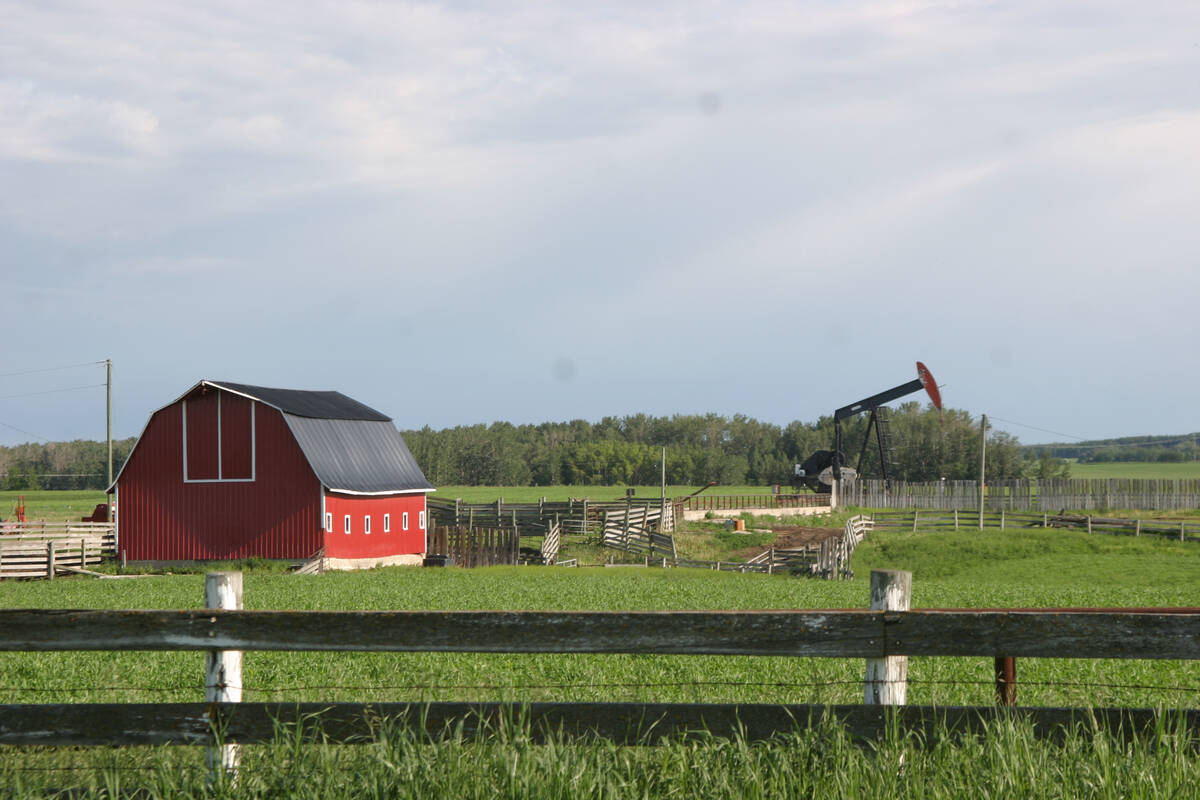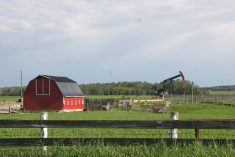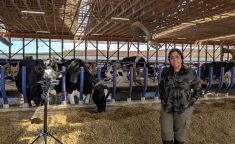When Robert and Angela Semeniuk won the Alberta regional Outstanding Young Farmers program nomination in 2012 one thing that stood out in their presentation was their clear focus on strong business principles. And a key part of that was their understanding that sustainability will play an important part in their future success of their fourth-generation family farm.
The couple currently farms about 3,400 acres, seeded to cereals, oilseeds and pulses, near Smoky Lake, Alta. In addition, they custom fertilize between 25,000 to 30,000 acres and custom seed about 1,000 acres.
“We were at a size that we wanted to really start thinking about the environmental side and the sustainability side and we wanted to focus on where we needed to improve,” says Angela Semeniuk.
Read Also

Recommendations in the mature assets strategy could cause potential problems for landholders
The Western Stock Growers’ Association urges producers to pay attention to the potential changes to Alberta’s Mature Assets Strategy.
They’ve used their Environmental Farm Plan (EFP) as a guide to develop an action plan geared to preserving their land for future generations. Here are four examples of what they’ve done.
Low-drift nozzles
One of the first things the Semeniuks tackled was spray drift. They had already incorporated a GPS into their spray technology package and they also use an auto boom shutoff on their sprayer to reduce the risk of chemical overlap during application. After completing their EFP in 2005, one of their first on-farm improvements was to replace the nozzles on their sprayer with low-drift nozzles. That one change alone helped them control drift during spraying and ultimately reduce the risk of pesticide buildup in non-target areas, such as neighbouring land and water bodies.
Revamped fuel storage
One clear risk their EFP identified was on-farm fuel storage, and the Semeniuks also knew they wanted to upgrade their system for on-farm storage of petroleum products in a big way. In 2011 they replaced a single, gravity-fed diesel 1,000-gallon storage tank, with three double-walled tanks that hold 1,000 gallons each. The double-walled tanks are designed for secondary containment of fuel products, so no additional berm is required. Having three tanks instead of one reduces risk further in the event of an accidental spill.
They also purchased a 500-gallon, double-walled storage tank for gasoline, as well as a used oil storage tank.
Farm shop redesign
One of the most powerful changes on the farm was when the Semeniuks built their shop last year. They built the 50×60-foot shop in order to save costs by doing more in-house maintenance. These days, the dealership’s mechanics come to the farm to service the equipment and the Semeniuks save on the high cost of trucking their equipment to the dealership.
They created their shop blueprints with environmental sustainability in mind. For example, the shop’s concrete floors are heated by an in-floor heating system, powered by a high-efficiency boiler. They also chose to install a closed containment system. A floor drain connects to a two-compartment sump and a 2,000-gallon holding tank. The tank is regularly pumped out by a truck which then transports the waste to a disposal facility. This feature ensures that shop waste is properly disposed of, minimizing potential risks to the environment.
“Building the shop, we were trying to think what would help environmentally,” Semeniuk says. “The containment system, more efficient lighting, an efficient boiler system; things like that all played a part when we were building it. We could have just put walls up and put some cement down, but we really thought and planned.”
Protecting wetlands
One continuing focus is protecting their wetlands while continuing to maximize their acreage. Currently, a dugout on one of the Semeniuk’s properties is protected by a grassy buffer zone, a feature which helps separate valuable riparian areas from cultivated fields and more intensively used land. Semeniuk says the grass in the buffer zone is cut only in the fall, to ensure nesting of waterfowl is not disrupted.
As they clear trees in order to bring a new quarter section of their land into production, the Semeniuks are keeping a close eye on wetland protection. They have identified one area that is very low and they will retain the natural state of that area, ensuring there is a buffer zone of natural grass, trees and shrubs around the water. In spring, they will take a closer look at the remainder of that property to get a clear picture of the natural flow of water as they build future plans for wetland protection. Angela adds they will continue to use their EFP as a guideline to ensure the quality of their water sources is preserved and protected.
“Our goal is to make the land as efficient as possible without destroying it,” Semeniuk says. “Each quarter we own has at least one low spot with water and trees in it. We will keep those and a buffer zone of grass and trees around them to protect them and the wildlife which inhabits them.”
Semeniuk says she is planning to update the family’s EFP in the future and is looking forward to determining how the updates they’ve made affect their ratings.
“I don’t think you can run a business without really knowing your environmental impact; you need to know that,” she says. “We have to make sure, especially farmers, that we can keep producing food. That’s the way we look at it — it’s not just about making money, it’s about feeding people.”














